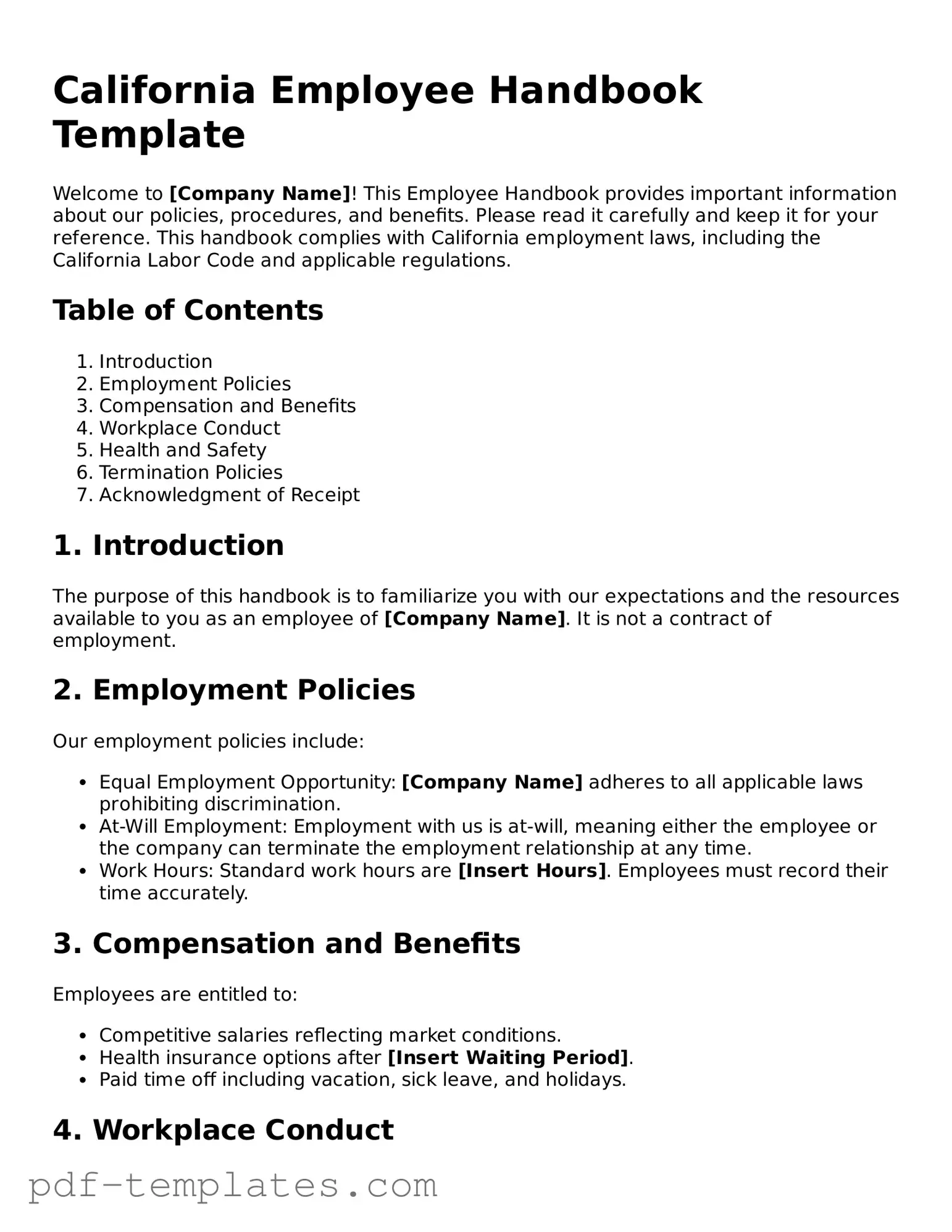The California Employee Handbook is similar to the Employee Manual, which serves as a comprehensive guide for employees about company policies, procedures, and expectations. Both documents outline workplace rules, employee benefits, and conduct standards. While the Employee Manual may be more detailed in specific areas, the Employee Handbook provides a concise overview suitable for quick reference.
Another document akin to the California Employee Handbook is the Workplace Safety Policy. This policy focuses specifically on safety regulations and procedures within the workplace. While the Employee Handbook includes general safety guidelines, the Workplace Safety Policy goes deeper into specific safety protocols, emergency procedures, and reporting mechanisms for unsafe conditions.
The Orientation Guide is also similar, as it is designed to introduce new employees to the company culture and operational procedures. While the Employee Handbook serves as a long-term reference, the Orientation Guide is often used during the onboarding process to help new hires acclimate quickly to their roles and the workplace environment.
The Code of Conduct document shares similarities with the Employee Handbook in that it outlines acceptable behaviors and ethical standards expected from employees. While the Employee Handbook provides a broader view of policies, the Code of Conduct focuses specifically on behavior, detailing the consequences of violations and promoting a respectful workplace.
The Benefits Summary is another document that complements the Employee Handbook. It details the various benefits available to employees, such as health insurance, retirement plans, and leave policies. The Employee Handbook may reference these benefits, but the Benefits Summary provides a more focused and detailed explanation of each option available to employees.
The Anti-Harassment Policy is closely related to the Employee Handbook as it addresses workplace harassment and discrimination. This policy outlines the company's commitment to a harassment-free environment, detailing reporting procedures and consequences for violations. The Employee Handbook typically includes a summary of this policy, emphasizing the importance of a respectful workplace.
The Attendance Policy is similar as it sets expectations regarding employee attendance and punctuality. While the Employee Handbook may briefly cover attendance expectations, the Attendance Policy provides specific guidelines on acceptable absences, tardiness, and the consequences of failing to adhere to these standards.
In the context of providing straightforward guidance, it’s also important to consider related documents such as the All California Forms, which can serve to clarify various legal obligations and requirements pertinent to employment and contractor relationships in California.
The Performance Review Process document aligns with the Employee Handbook by outlining how employee performance will be assessed and evaluated. This document may provide details on evaluation criteria, frequency of reviews, and the process for providing feedback, while the Employee Handbook gives a general overview of performance expectations.
The Leave of Absence Policy is another document that complements the Employee Handbook. It explains the types of leave available to employees, such as sick leave, family leave, and personal leave. While the Employee Handbook mentions these options, the Leave of Absence Policy offers more detailed information on eligibility, application procedures, and duration of leave.
Finally, the Employee Grievance Procedure is similar to the Employee Handbook as it outlines the steps employees can take to voice concerns or complaints. This procedure details how grievances should be reported and the process for resolution, while the Employee Handbook may provide a brief overview of the importance of addressing workplace issues in a constructive manner.
